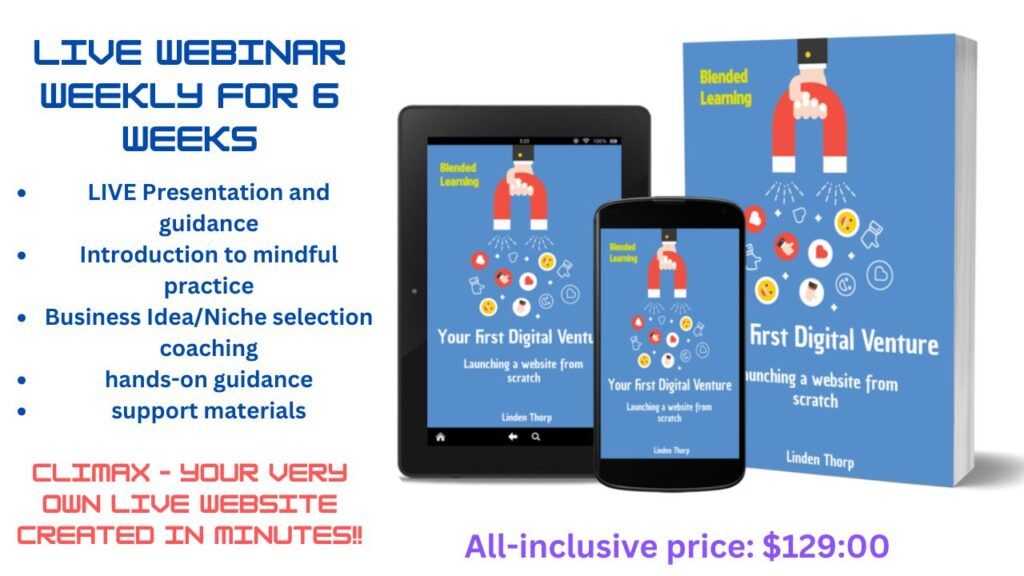
AI-driven marketing leverages artificial intelligence to make marketing efforts more innovative and more efficient.
Consider automated tools that can analyze data, predict trends, and create content.
This isn’t just a buzzword – it’s a revolution for marketers, especially in niche industries.
In modern marketing, AI is essential.
It helps businesses not only keep up but also stand out.
AI can provide the insights needed to reach and engage the right people more effectively for niche industries where the target audience is specific and sometimes small.
Niche markets face unique challenges.
Often, they have:
- limited budgets
- smaller teams
- need highly targeted messaging to convert customers
Traditional marketing methods can fail here.
AI steps in by offering precision and scale that cannot be matched manually.
AI tools can segment audiences incredibly accurately, create personalized experiences that resonate, and even automate repetitive tasks to free up time for strategic thinking.
For instance, an AI-driven email campaign can tailor messages to individual preferences, boosting engagement and conversions.
The use of AI in niche industries isn’t just about solving problems—it’s about seizing opportunities.
Small companies can compete with more prominent players by leveraging data-driven insights that inform wiser decisions.
This means consistently staying ahead of trends and competitors, ensuring your marketing efforts are always one step ahead.
Personalized Marketing: Leveraging AI to Understand and Connect with Your Audience
At the heart of AI-driven marketing is the power to personalize.
AI tools can analyze massive amounts of data, segment audiences, and create tailored messaging that feels one-on-one.
This is crucial for niche markets where understanding your audience deeply can set you apart.
One of the first steps in personalized marketing is leveraging AI for audience segmentation and targeting.
Tools like customer data platforms (CDPs) aggregate data from various touchpoints, offering a comprehensive view of customers’ behaviours and preferences.
With these insights, you can create particular audience segments and send them relevant, personalized content.
Several tools and technologies are designed for personalized marketing.
AI-powered email marketing platforms can craft personalized messages based on user behaviour.
Recommendation engines, common in e-commerce, suggest products that align perfectly with individual user preferences.
Consider how AI can transform your content strategy.
Personalized content can include product recommendations, tailored blog posts, or custom video messages.
The key here is relevance.
Customers who see content that resonates with their interests and needs are more likely to engage and convert.
Look at case studies from niche businesses to see this in action.
For example, an online retailer specializing in organic pet food might use AI to send personalized emails to pet owners based on their purchase history and browsing behaviour.
This would result in a more personalized shopping experience, leading to higher sales and customer loyalty.
Implementing personalized marketing strategies isn’t just about technology; it’s also about best practices.
- Start by clearly defining your goals and metrics for success.
- Regularly update your data and refine your audience segments to keep your campaigns fresh and relevant.
- Ensure privacy and data security to build trust with your audience.
- Lastly, combine AI insights with your creative instincts to create marketing that feels both smart and human.
Predictive Analytics: Anticipating Market Trends and Consumer Behavior
Predictive analytics uses AI to forecast future trends based on historical data.
For niche industries, this can be incredibly valuable.
AI tools analyze patterns and behaviours to predict what will happen next.
This helps businesses make informed decisions and stay ahead of the curve.
One of predictive analytics’ main benefits is that it enables better decision-making.
Instead of making guesses, you can base your strategies on solid data.
This means:
- more accurate inventory management
- targeted marketing efforts
- a greater understanding of customer needs
Take predictive analytics for niche food brands as an example.
By analyzing purchase trends and consumer feedback, these brands can anticipate which products will be in demand.
This helps them manage inventory and avoid overproduction, which can be costly.
Another excellent use case is in the healthcare sector, specifically for specialized medical equipment suppliers.
Predictive analytics can help anticipate demand for certain products based on trends in the healthcare industry.
This ensures suppliers can meet demand without having excess inventory.
To integrate predictive analytics into your marketing strategy:
- Start with clear goals. Identify what you need to predict – be it customer behaviour, sales trends, or product demand.
- Use AI tools that fit your needs, such as machine learning platforms or specialized analytics software.
- Work closely with data analysts to interpret the results effectively.
- Remember, the value of predictive analytics lies in how you use the insights.
- Regularly review and adjust your strategies based on new data to keep them relevant.
This continuous improvement will help your business adapt to changing market conditions and consumer preferences.
AI-Enhanced Content Creation and Distribution
Content creation and distribution have always been at the core of marketing, but with AI, these processes can reach new levels of efficiency and effectiveness.
AI tools for content generation can produce high-quality text, images, and even videos tailored to your audience’s preferences.
Tools like GPT-4 can help draft compelling articles, social media posts, or ad copy, saving time and resources.
But remember, while AI can aid in production, keeping the human touch in your content is vital. It’s what connects on a deeper level.
Regarding distribution, AI takes the guesswork out of when, where, and how to share your content.
AI-driven platforms can analyze user engagement data to determine the optimal posting times and channels, ensuring your content reaches the right audience at the right time.
This leads to better engagement and higher conversion rates.
Real-world examples abound.
Consider a niche travel blog using AI to generate personalized travel itineraries for different types of travellers.
Or an independent filmmaker using AI tools to create targeted promotional material that speaks directly to different audience segments.
These aren’t just hypotheticals—they’re practical applications making a tangible impact.
Looking ahead, AI will continue to transform content strategies.
Expect to see more sophisticated algorithms capable of producing hyper-personalized content in real time.
While this tech evolves, balancing automation with creativity and authenticity will remain crucial.
AI can provide the data and insights needed, but the unique human perspective will always be indispensable.
Start by integrating AI tools that align with your goals to make the most of AI-enhanced content strategies.
Use these tools to handle repetitive tasks, allowing your team to focus on more strategic and creative elements.
Review the performance metrics regularly to refine your approach continually.
This way, AI becomes a powerful ally in your content marketing arsenal.
If you need help launching your website, join my 6-step program, Launch Your First Digital Venture: Live Website Creation and Mindfulness training in 6 weeks, in which I’ll guide you through every step of the process.

You’ll also benefit from attending my Escape the 9-5 Grind events on LinkedIn, designed to help you shift from employee to self-reliant entrepreneur. Touch the Image to register.
Every Wednesday on LinkedIn at 9:00 + 12:00 (noon) [BST + GMT]

Let’s build your digital future together!

